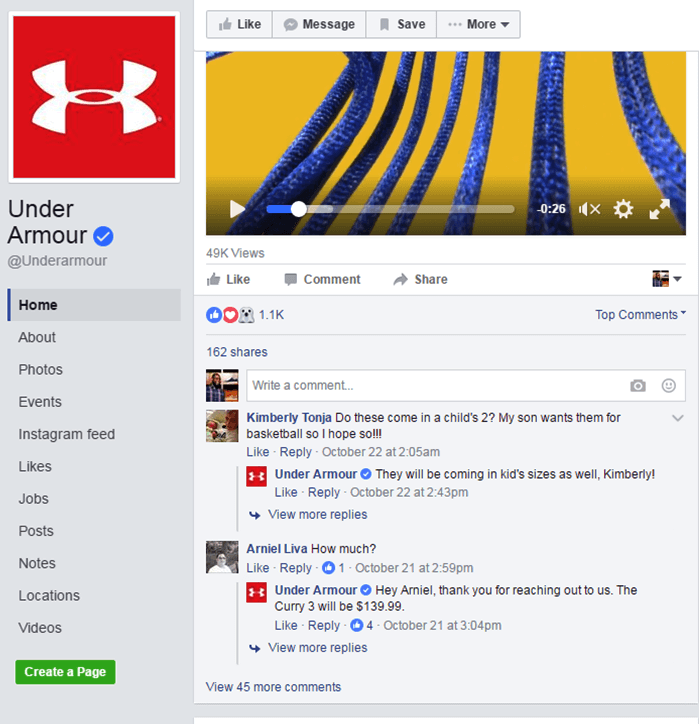![]()
Yesterday Nike held it’s Fiscal Year 1Q 2017 conference call and report and as I’ve been discussing for a few years when I began seeing the disappearance of mom and pop accounts, they pushed off the worst year on the stock market they’ve ever had by leaning heavily on their path to DTC. Their conference call finally made clear to Wall Street that Futures were no longer the catalyst for growth. This reignited confidence in the brand and for the first time all year Nike is trending up on the market. I don’t see it slowing down as the brand doubles down on releases like the Hyperadapt and their “Express Lane” feature to streamline the release of footwear as they did with the Lunarcharge.
What does this mean for the market overall. I see Nike as a California styled company. What I mean by that is California is typically the first state to implement ‘certain’ changes. After that other states follow. Nike’s ability to adapt to the market by focusing on DTC keeps them in line with their growth being similar to a start-up even after 50 years. If Nike with their size can pivot, smaller companies should be able to follow suit and I know they will. Which means Nike wins, brands follow, but who loses?
This is Part 2 on the companies who will lose due to Nike’s rebound.
Under Armour
Nike’s ability to develop their DTC while maintaining relationships with Footlocker and large wholesale accounts means that Under Armour’s growth in Footwear is in jeopardy. Let me explain. This year the 18% decrease in share price, and shareholders and investors confidence in the brand was based on the idea that Nike Futures should be higher and if they weren’t higher this would hurt Nike’s margins and profitability. Instead Nike announced that Futures really didn’t move, but DTC grew considerably. While Wall Street saw Nike removing Futures as a metric as a red flag, Nike proved that the removal was because they have built the infrastructure to deliver goods without as many wholesale accounts. What does this have to do with Under Armour?
The perceived misstep by Nike allowed Under Armour a chance to really develop their footwear business and possibly pursue more athletes who would want to get on board with the brand. Instead Under Armour failed to market Steph Curry and dropped from number 2 in the US to not in the top 5 at all. I keep mentioning Steph because he is integral to their success. UA allowed him to shrink after his Finals loss to Nike’s LeBron and the Cavs. If LeBron had lost Nike would have built a narrative around rebounding and fighting back.
- Under Armour allowed Steph to disappear.
- Steph didn’t play in the Olympics.
- Under Armour sent out teaser shots of the Curry 3 and there wasn’t any branding on the shoe (which I’ve come to actually like) or real marketing (which I think was terrible).
- Under Armour waited until the beginning of the season to create 1 ONE!!!! ad for the Curry 3 #Makethatold. It was a solid ad, but there hasn’t been any marketing and without Curry playing in the Olympics, and going against back to school sales they released a shoe to zero fanfare failing to capitalize on no LeBron in the Olympics. Nike however built small campaigns around Draymond Green, Isaiah Thomas, and Paul George. They dropped Olympic themed Kyrie 2s and Kobe XI Olympic releases and then they pulled off one of the biggest releases for basketball this year a release of Scottie Pippen’s Air More Uptempo Olympic which sold out immediately.
- During this time Under Armour marked down the Curry 2.5 which was still in stores when they introduced the Curry 3. Even if Steph didn’t play there should have been a retro release of the USA Curry 2.
- Instead Under Armour announced that they would be increasing marketing which meant that investors should not be expecting the same growth. They celebrated the signing of MLB, a sport that is diminishing in interest and doesn’t connect to the footwear market where they are expecting growth and even today there hasn’t been a commercial or marketing for the Curry 3.
- Under Armour created an entirely different division for sportswear, UAS, and then did a pop up shop as a secondary introduction.
- Under Armour has yet to act like a smaller agile performer. The Website design is poor, the marketing is rough, and the content creation and branding for its athletes is non-existent. Michael Phelps’ ad won an award, but Under Armour isn’t even using him to market their apparel. They are creating distance between UA and UAS.
Nike stumbled for an entire year according to Wall Street and Under Armour didn’t capitalize. I really like the brand. I see so much potential, but it seems the market agrees with me. They recently did a ticker name change and rang the bell at NYSE. Since then the Split for Class C UA and UAA Class A have both dropped. UAA is now below 30/share and although UA is higher it’s stalling and now Nike is back (which they never left).
With Nike’s Express Lane and streamlined approach being implemented as well as Nike’s takeover of the NBA in 2017, Nike will continue to push Under Armour and the brand doesn’t have enough cash to compete. 2017 for Under Armour is going to look like a minefield and Under Armour needs to find a sonar or mine detector because walking slowly which is what they are doing will leave them in a really bad position.
Part 1 When Nike Wins, Who Loses
Part 3 of When Nike Wins: Retail Stores Not Named FootLocker


